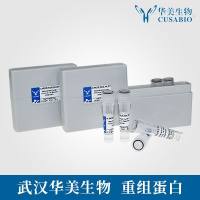Protein-protein interactions in biological membranes can be studied using conventional chemical crosslinking methods, crosslinked products being detected either by altered molecular weights on SDS-polyacrylamide gels or using specific antibodies. Unfortunately, such studies can give crosslinked products too large to enter the gels, and it can be difficult to eliminate the possibility that crosslinked products form as a result of diffusion of the components in the membrane rather than because a complex of the components is present in the membrane (1 ). An alternative is to use spectroscopic techniques, and both electron spin resonance (ESR), especially saturation transfer ESR, and fluorescence techniques have been used to study protein-protein interactions in membranes. The ESR technique is sensitive to rates of motion of membrane proteins and can detect aggregation of membrane proteins from the resulting reduction in the rate of rotation of the proteins (2 ,3 ). The fluorescence technique operates on too fast a time scale (ns) to be sensitive to protein rotation, but can measure distances between protein molecules in the membrane, which would be expected to be smaller for molecules present in an aggregated form than for those distributed randomly in the plane of the membrane.






